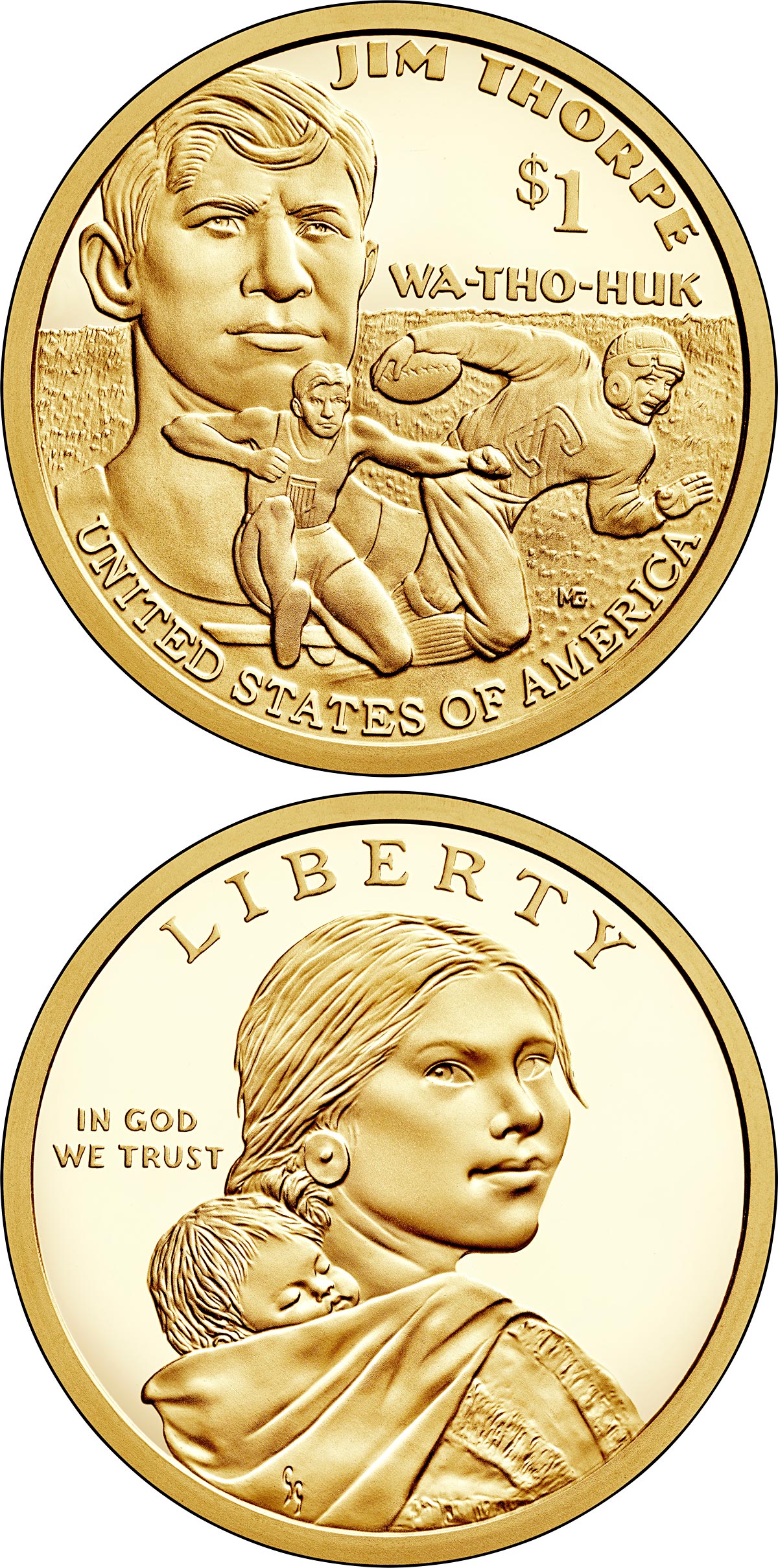1 dollar - Jim Thorpe
Series: USA - Native American Dollar Coin Program

 The United States Mint (Mint) officially announced the reverse (tails) design of the 2018 Native American $1 Coin. The coin’s theme pays homage to sports legend Jim Thorpe.
The United States Mint (Mint) officially announced the reverse (tails) design of the 2018 Native American $1 Coin. The coin’s theme pays homage to sports legend Jim Thorpe.The 2018 reverse design depicts Jim Thorpe, with the foreground elements highlighting his football and Olympic achievements. Inscriptions are “JIM THORPE,” “WA-THO-HUK” (Thorpe’s Sac and Fox tribe name), “UNITED STATES OF AMERICA,” and “$1.” United States Mint Sculptor-Engraver Michael Gaudioso created the design.
Products containing the 2018 Native American $1 Coin are scheduled to go on sale on February 15, 2018.
Authorized by the Public Law 110-82, the Native American $1 Coin Program celebrates the important contributions made by Native American tribes and individual Native Americans to the history and development of the United States. The public law mandates that a reverse design, with an image emblematic of one important Native American or Native American contribution, be issued at a rate of once a year.
The obverse (heads) design of the Native American $1 Coin continues to feature the central figure “Sacagawea” carrying her infant son, Jean Baptiste. Inscriptions are “LIBERTY” and “IN GOD WE TRUST,” while the year, mint mark, and “E PLURIBUS UNUM” are incused on the coin’s edge.
James Francis Thorpe (Sac and Fox (Sauk): Wa-Tho-Huk, translated as "Bright Path"; May 22 or 28, 1887 – March 28, 1953) was an American athlete and Olympic gold medalist. A member of the Sac and Fox Nation, Thorpe became the first Native American to win a gold medal for his home country. Considered one of the most versatile athletes of modern sports, he won Olympic gold medals in the 1912 pentathlon and decathlon, and played American football (collegiate and professional), professional baseball, and basketball. He lost his Olympic titles after it was found he had been paid for playing two seasons of semi-professional baseball before competing in the Olympics, thus violating the amateurism rules that were then in place. In 1983, 30 years after his death, the International Olympic Committee (IOC) restored his Olympic medals.